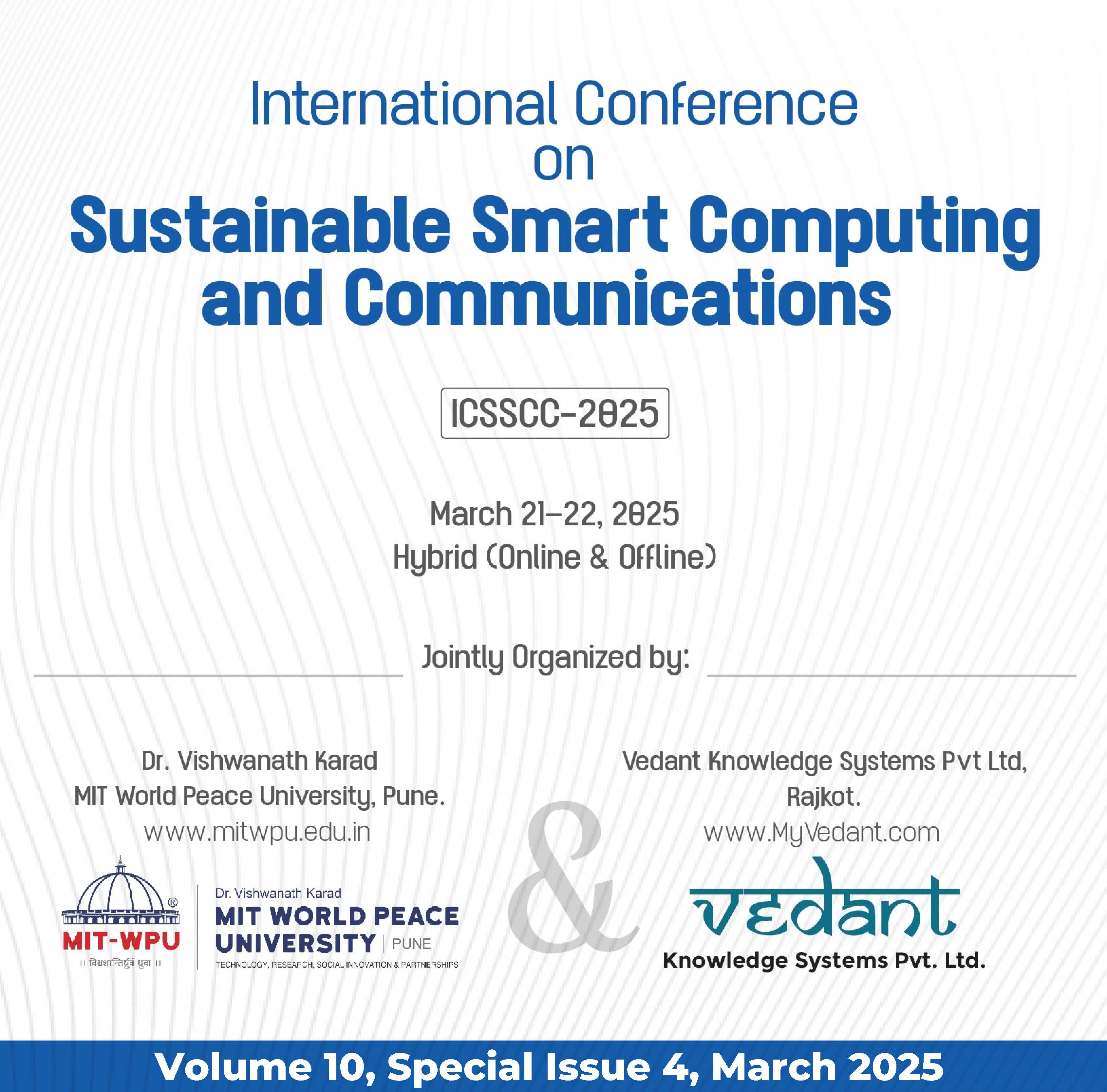Deep Learning Revolution in Skin Cancer Diagnosis with Hybrid Transformer-CNN Architectures
Keywords:
CNN, Classification, Skin Cancer, Deep Learning, SegmentationAbstract
In the realm of healthcare, skin cancer represents one of the most prevalent and fatal diseases, constituting a significant global health concern due to its escalating incidence and the imperative for prompt and precise diagnostic interventions. Conventional diagnostic approaches, which depend heavily on clinical acumen and histopathological evaluations, are frequently characterized by protracted timelines and susceptibility to subjective inaccuracies. The emergence of artificial intelligence (AI), particularly through the utilization of deep learning (DL) methodologies, has dramatically transformed the field of medical imaging by facilitating the analysis of intricate patterns inherent within data. The integration of transformers with convolutional neural networks (CNNs) has resulted in hybrid models that effectively harness the advantages offered by both architectural frameworks. CNNs are particularly adept at the extraction of local features, whereas transformers afford a comprehensive overview, yielding models that exhibit robustness and accuracy in the detection and classification of skin cancer through the analysis of dermoscopic imagery. Transformers, a cutting-edge architecture originally developed for the domain of natural language processing, have recently attracted significant interest within the field of medical imaging due to their capacity to capture long-range dependencies and contextual interrelationships. This investigation encompasses a variety of skin cancer types, including melanoma, basal cell carcinoma, and squamous cell carcinoma, thereby elucidating their clinical characteristics, associated risk factors, and the diagnostic hurdles encountered. This study explores the contributions of datasets, transformer architectures, and deep learning (DL) techniques in enhancing the diagnostic capabilities related to skin cancer, significantly improving the precision of skin cancer lesion classification while concurrently reducing both time and financial expenditure by underscoring their collaborative potential and prospects for future research endeavours.
Downloads
References
Zhang, Y., Xie, Y., Wang, H., Avery, J., Hull, M., & Carneiro, G. (2024). A Novel Perspective for Multi-modal Multi-label Skin Lesion Classification. arXiv.Org, abs/2409.12390. https://doi.org/10.48550/arxiv.2409.12390
Toprak, A. N., & Aruk, I. (2024). A Hybrid Convolutional Neural Network Model for the Classification of Multi‐Class Skin Cancer. https://doi.org/10.1002/ima.23180
Attallah, O. (2024). A Hybrid Trio-Deep Feature Fusion Model for Improved Skin Cancer Classification: Merging Dermoscopic and DCT Images. Technologies (Basel), 12(10), 190. https://doi.org/10.3390/technologies12100190
Akter, M., Khatun, R., Talukder, Md. A., Islam, Md. M., & Uddin, Md. A. (2024). An Integrated Deep Learning Model for Skin Cancer Detection Using Hybrid Feature Fusion Technique. https://doi.org/10.48550/arxiv.2410.14489
Zaw, K. P., & Mon, A. (2024). Enhanced Multi-Class Skin Lesion Classification of Dermoscopic Images Using an Ensemble of Deep Learning Models. https://doi.org/10.62411/jcta.11530
Esteva, A., Kuprel, B., Novoa, R. A., Ko, J., Swetter, S. M., Blau, H. M., & Thrun, S. (2017). Dermatologist-level classification of skin cancer with deep neural networks. Nature, 542(7639), 115-118. https://doi.org/10.1038/nature21056
Dosovitskiy, A., Beyer, L., Kolesnikov, A., Weissenborn, D., Zhai, X., Unterthiner, T. & Houlsby, N. (2020). An Image is Worth 16x16 Words: Transformers for Image Recognition at Scale. arXiv preprint arXiv:2010.11929. https://arxiv.org/abs/2010.11929
Vaswani, A., Shazeer, N., Parmar, N., Uszkoreit, J., Jones, L., Gomez, A. N., ... & Polosukhin, I. (2017). Attention is All You Need. Advances in Neural Information Processing Systems (NeurIPS), 30, 5998-6008. https://arxiv.org/abs/1706.03762
Zhang, J., Xie, X., Wu, J., & Huang, Y. (2021). Hybrid Vision Transformer and CNN Models for Skin Lesion Classification. Proceedings of the International Conference on Medical Image Computing and Computer-Assisted Intervention (MICCAI).
Tschandl, P., Rinner, C., Apalla, Z., Argenziano, G., Codella, N., Halpern, A., ... & Kittler, H. (2018). Expert-Level Diagnosis of Nonpigmented Skin Cancer by Combined Convolutional Neural Networks. JAMA Dermatology, 154(8), 1023-1029. https://doi.org/10.1001/jamadermatol.2018.1678
He, K., Zhang, X., Ren, S., & Sun, J. (2016). Deep Residual Learning for Image Recognition. Proceedings of the IEEE Conference on Computer Vision and Pattern Recognition (CVPR), 770-778. https://doi.org/10.1109/CVPR.2016.90
Li, X., Wang, Y., Yang, Z., Chen, C., & Luo, G. (2022). Transformer-Based Attention Networks for Skin Lesion Detection and Classification. IEEE Transactions on Medical Imaging. https://doi.org/10.1109/TMI.2022.3141273
Yadav, N., Singh, M., & Singh, R. (2022). Hybrid Learning Models for Improved Skin Cancer Classification. Biomedical Signal Processing and Control, 75, 103623. https://doi.org/10.1016/j.bspc.2022.103623
Codella, N. C. F., Lin, C. C., Halpern, A., & Smith, J. R. (2018). Skin Lesion Analysis Toward Melanoma Detection: A Challenge at the ISIC 2017 Dataset. Proceedings of the IEEE International Symposium on Biomedical Imaging (ISBI), 168-172. https://doi.org/10.1109/ISBI.2018.8363547
Liu, Z., Lin, Y., Cao, Y., Hu, H., Wei, Y., Zhang, Z., ... & Guo, B. (2021). Swin Transformer: Hierarchical Vision Transformer Using Shifted Windows. Proceedings of the IEEE/CVF International Conference on Computer Vision (ICCV), 10012-10022. https://doi.org/10.1109/ICCV48922.2021.00986
